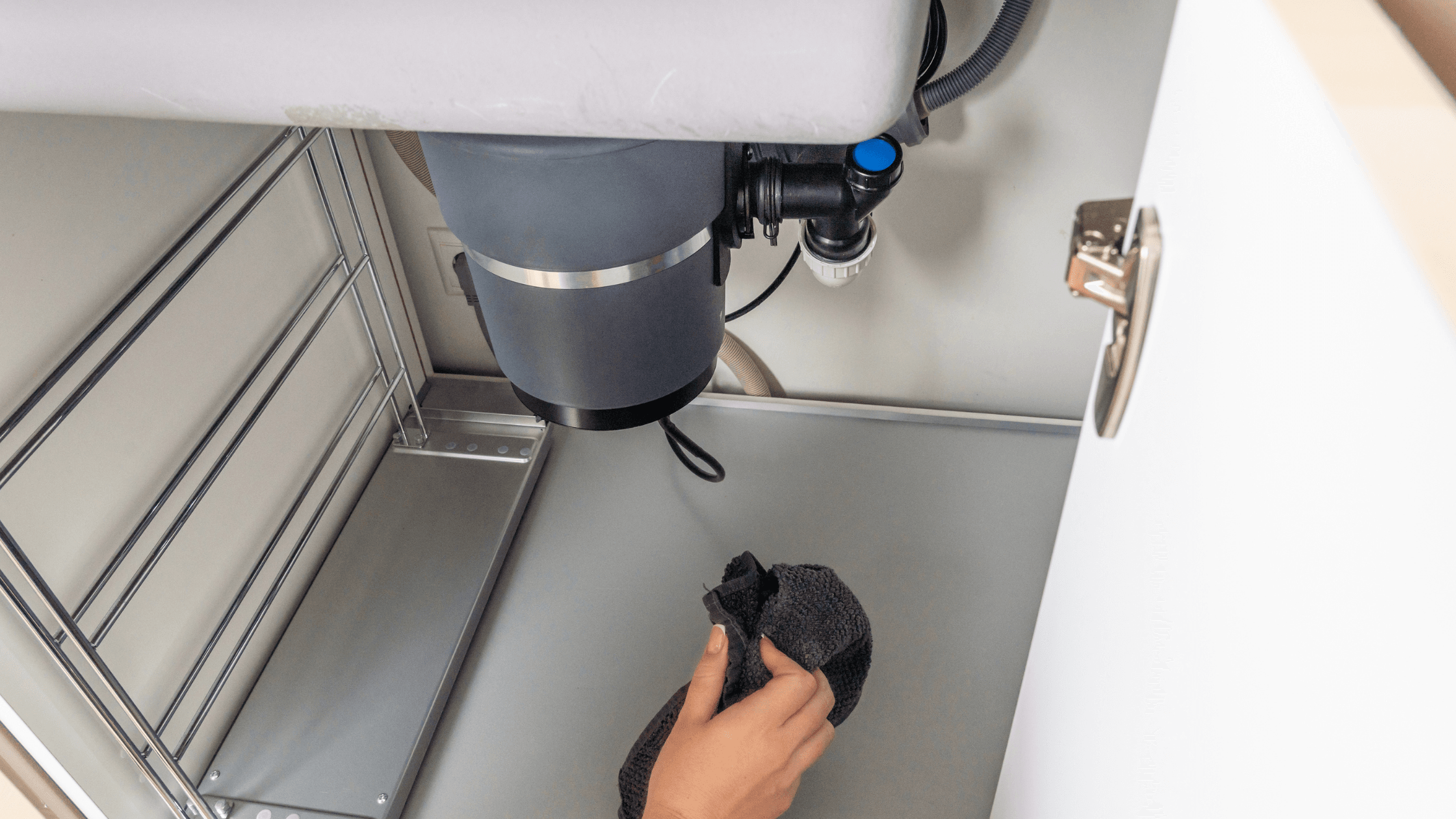Straightforward Ways to Repair a Leaky Waste Disposal Unit
Straightforward Ways to Repair a Leaky Waste Disposal Unit
Blog Article
What are your beliefs on Why Is My Garbage Disposal Leaking From the Bottom??

Waste disposal unit are necessary kitchen appliances that help in taking care of food waste successfully. Nonetheless, a dripping garbage disposal can be an aggravating and messy trouble to deal with. Luckily, lots of leakages can be dealt with conveniently with a couple of straightforward actions. In this write-up, we will certainly review exactly how to deal with a leaking garbage disposal efficiently.
Introduction
Waste disposal unit are mounted under kitchen area sinks and are created to shred food waste into smaller items, enabling it to travel through the plumbing system quickly. While these devices are normally dependable, leaks can happen with time due to wear and tear, loose links, or damages to the device.
Step-by-Step Overview to Fixing a Leaking Garbage Disposal
Shut off the Power
Before attempting any type of fixings, make sure that the power to the waste disposal unit unit is shut off to prevent the risk of electrical shock.
Situate the Leakage
Recognize the precise place of the leakage and identify the cause
Tighten up Links
Utilize a wrench to tighten any kind of loosened links in between the disposal device and the pipes system.
Replace Seals or Gaskets
If the leakage results from worn seals or gaskets, remove the old elements and change them with brand-new ones.
Patching Splits or Holes
For cracks or holes in the disposal unit, usage epoxy or an appropriate patching product to seal the damaged area.
Determining the Resource of the Leakage
Prior to trying to repair a dripping garbage disposal, it is essential to identify the resource of the leakage. This can typically be done through visual inspection or by conducting straightforward examinations.
Visual Evaluation
Inspect the waste disposal unit system carefully for any kind of indicators of water leak. Pay close attention to locations around seals, gaskets, and link factors.
Testing for Leakages
One way to test for leaks is by running water via the disposal unit and looking for any kind of visible signs of leakage.
Usual Root Causes Of Leaks in Waste Disposals
Worn Seals and Gaskets
Seals and gaskets play a critical function in preventing water from dripping out of the waste disposal unit. In time, these components can weaken, leading to leakages around the disposal system.
Loose Links
The connections in between the waste disposal unit and the plumbing system can become loose with time, causing water to leak out throughout procedure.
Splits or Holes in the Disposal Device
Physical damage to the garbage disposal, such as cracks or openings in the real estate, can additionally lead to leaks.
Tools and Materials Needed for Repairing a Dripping Waste Disposal Unit
Before starting the repair work procedure, collect the necessary devices and products, including a screwdriver, flexible wrench, plumber's putty, substitute seals or gaskets, and epoxy or patching product for repairing cracks or openings.
Evaluating the Waste Disposal Unit After Repair
When the repair is full, test the waste disposal unit by running water through it to make sure that the leakage has actually been solved.
Preventive Upkeep Tips to Prevent Future Leaks
To stop future leakages, it is vital to carry out regular maintenance on your waste disposal unit. This consists of keeping it tidy, preventing putting non-food products or hard things down the disposal, and regularly checking for leaks or other concerns.
Conclusion
To conclude, taking care of a leaking garbage disposal is a reasonably simple process that can be finished with standard devices and materials. By adhering to the actions detailed in this short article and practicing preventative maintenance, you can keep your garbage disposal in good working condition and stay clear of costly repairs in the future.
What to Do About a Leaking Garbage Disposal
A leaking garbage disposal often goes unnoticed until you confront a sopping cabinet, a foul-smelling puddle, or an audible drip-drip-drip from the unit. The fix can be frustrating, too, because the leak can stem from a number of components in the system. Fortunately, with a little sleuthing, you can zero in on the leak and—depending on the exact location—stop the icky oozing and repair the component that caused it. Worst case scenario, if it turns out that the garbage disposal must be replaced, installing a new one is a reasonable do-it-yourself task for those with basic plumbing skills. Read on to keep the cash you’d otherwise hand over to a pro.
Prepare to find the leak
Prior to testing the garbage disposal for leaks, unplug it at the wall outlet and turn off the power from the breaker box to prevent electrical shock. Then insert a watertight sink stopper into your sink drain and wipe the unit dry with a clean cloth. In any handy container, mix a few drops of food coloring into a few cups of water, and pour the dyed water onto the sink stopper to help you locate the leak.
Investigate the source
the top, where the disposal meets the sink drain the side, where the dishwasher hose or main drain pipe connects to the disposal or the bottom of the unit Inspect each of these locations while gliding a light-colored rag over the unit; the dyed water will readily show on the rag and reveal the location of the leak. If a leak isn’t immediately apparent, remove the sink stopper and pour a few more cups of dyed water down the sink drain, then check for leaks again. Leaks near the top of the unit are more likely to show themselves while the sink is plugged, while side and bottom leaks are more noticeable while the sink is unplugged.
The metal sink flange that sits directly inside the sink drain is typically sealed around the top with plumber’s putty (a clay-like sealant) and then secured from under the sink with bolts. If the plumber’s putty deteriorates, or the bolts loosen, the flange can no longer form a watertight seal between the sink drain and the disposal—which could cause a leak at the top of the unit.
To reseal the leaky flange, you must first detach the garbage disposal. Start by loosening the screws securing the main drain pipe to the disposal, then loosen the screws in the metal clamp securing the dishwasher hose to the disposal and detach the drain pipe and dishwasher hose from the disposal. Loosen the screws in the mounting ring that connects the disposal to the metal mounting assembly beneath the sink, then pull down the disposal and carefully set it on a clean, dry surface. Loosen the bolts in the mounting assembly with a wrench, then pull down the mounting assembly and set it near the disposal.

I am very drawn to The Handy Guide To Fixing Your Garbage Disposal Leaking and I am assuming you enjoyed my blog post. Liked our piece? Please share it. Let others discover it. Thank you so much for going through it.
Book Your Installation Report this page